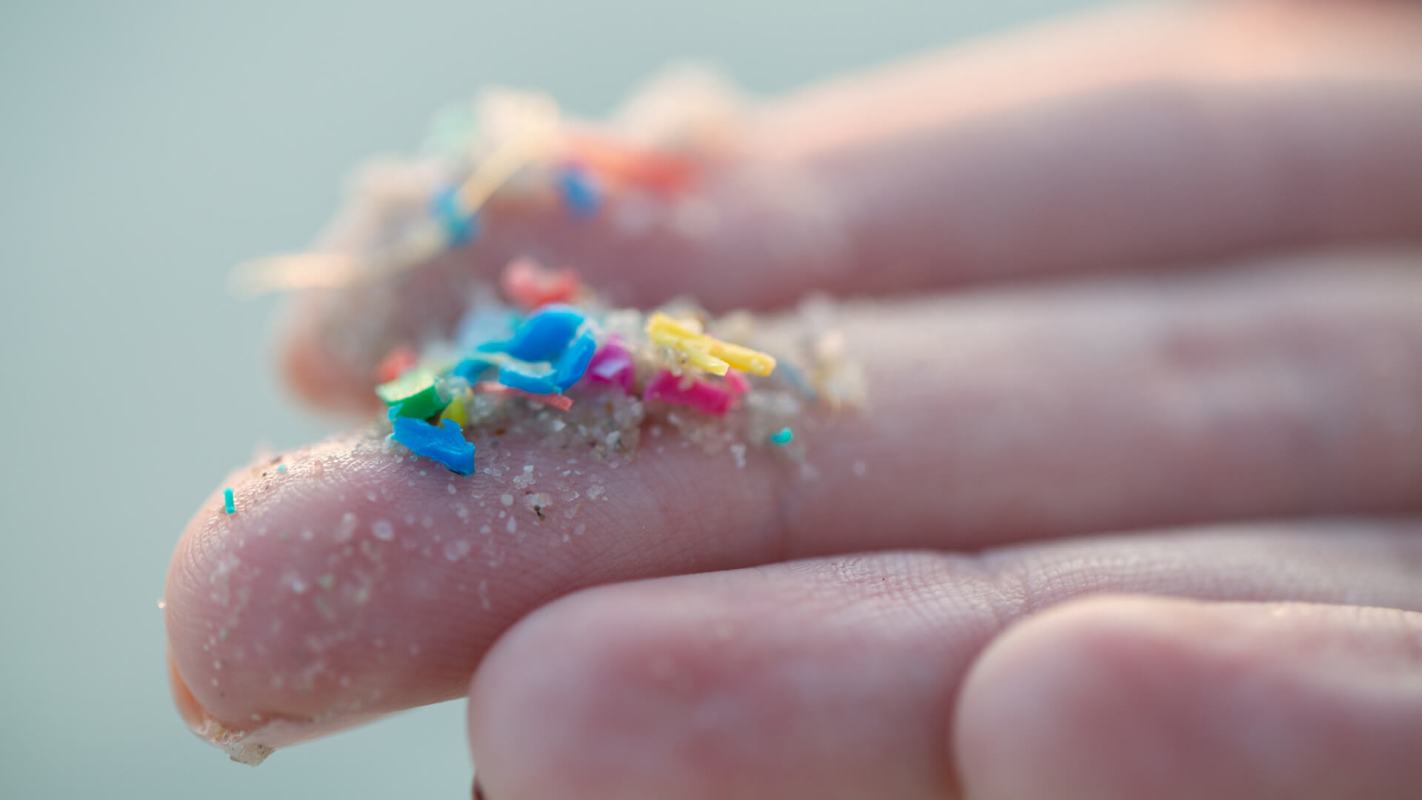Yoga pants, windbreakers, bed sheets, and more of our favorite garments are hiding a big secret within their threads: microfibers.
What are microfibers?
Any time textiles are manufactured, worn, washed, or dried, they break down and shed small strands of material called microfibers, some of which can be so small that a microscope is needed to see them.
There are two types of microfibers: natural and synthetic. Fabrics like cotton, wool, and hemp shed natural microfibers.
Synthetic materials like polyester, nylon, and acrylic are made from plastic and thus shed synthetic microfibers, a type of microplastic. These are the materials that make up a ton of popular clothing items like athletic wear and yoga pants, as well as the bulk of fast fashion inventories.
Natural microfibers degrade and decompose more frequently and more quickly than their synthetic counterparts, leaving fewer natural microfibers behind to pollute the environment.
These synthetic microfibers that shed in the wash travel from wastewater to our oceans, evading water purification filters.
Once in the ocean, these tiny materials get swallowed by marine life, including the seafood that ends up on our plates. Mollusks like mussels are believed to contain the most synthetic microfibers out of all the edible seafood options.
Synthetic microfibers in fish can inhibit growth and cause premature death, two effects that severely harm aquatic ecosystems and the fishing industry.
Natural vs. synthetic microfibers
As a general rule of thumb, anything that comes from the Earth can be returned to the Earth. Think about how plants decompose and provide nutrients to the soil and other plants.
This circular life cycle does not apply toward plastic-based materials. Because plastic is man-made and created from processed dirty fuels like crude oil, it does not decompose as natural materials do — instead, it breaks down into smaller pieces, producing microplastics.
The massive problem of synthetic microfibers
Microfibers from synthetic materials are particularly concerning, considering how quickly these plastic-based fibers can accumulate and how long they stay in the environment.
Research from the University of Plymouth found that one person can release an estimated 300 million microfibers into the environment in a single year just by washing polyester clothing — and some of these synthetic microfibers won't decompose within our lifetimes.
Microplastics, such as synthetic microfibers, are much more prevalent than previously thought.
Even though plastic production gained steam just 70 years ago, microplastics have been found in our air, water, soil, plants, animals, and even in our own bodies.
What these findings don't tell us is the impact that synthetic microfibers and other microplastics have on our health. Although the topic of microplastics is extremely complex and widely debated, many scientists agree that we should proceed with caution and conduct more research to understand these impacts.
What you can do to contain microfibers
The root of the issue with microfibers is the overuse of synthetic materials in the textile and fashion industries -– 69% of all the materials used in textiles are made from synthetic fibers.
But this doesn't mean that you can't help minimize the number of fibers shed by your clothing.
Here are a few simple actions you can take that can even save you money on your utility bills:
Wash clothing items, like denim, less often (Levi's recommends washing after ten wears)
Wash clothes in cold water on shorter cycles
Wash full loads of laundry with similar materials to limit the friction that causes shedding
Incorporate a microfiber filter or microfiber-catching laundry bag into your laundry routine
Try to limit the number of clothes in your closet with synthetic materials such as polyester, nylon, acrylic, and spandex
Invest in well-made clothes made from natural materials that are made to last
Each action you take can help to keep microfibers out of our environment and encourage clothing and textile companies to use more natural materials.
Follow The Cool Down on Instagram and TikTok.








